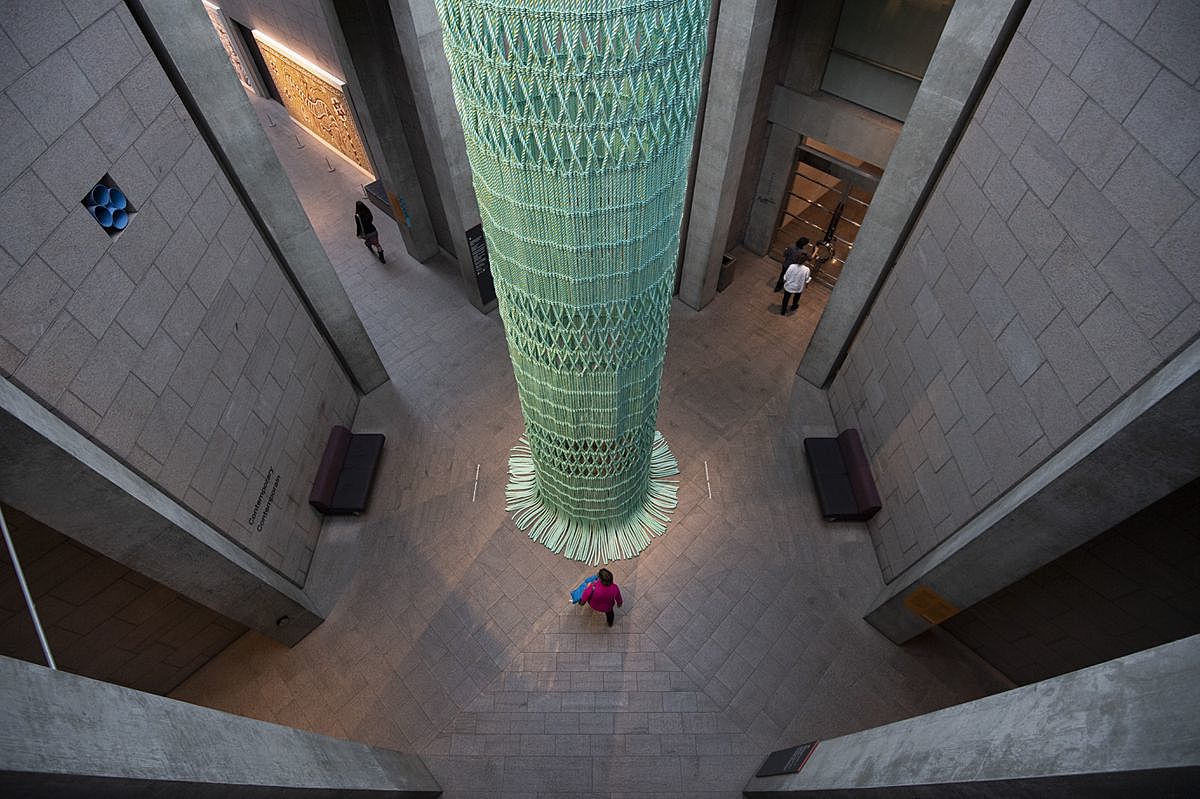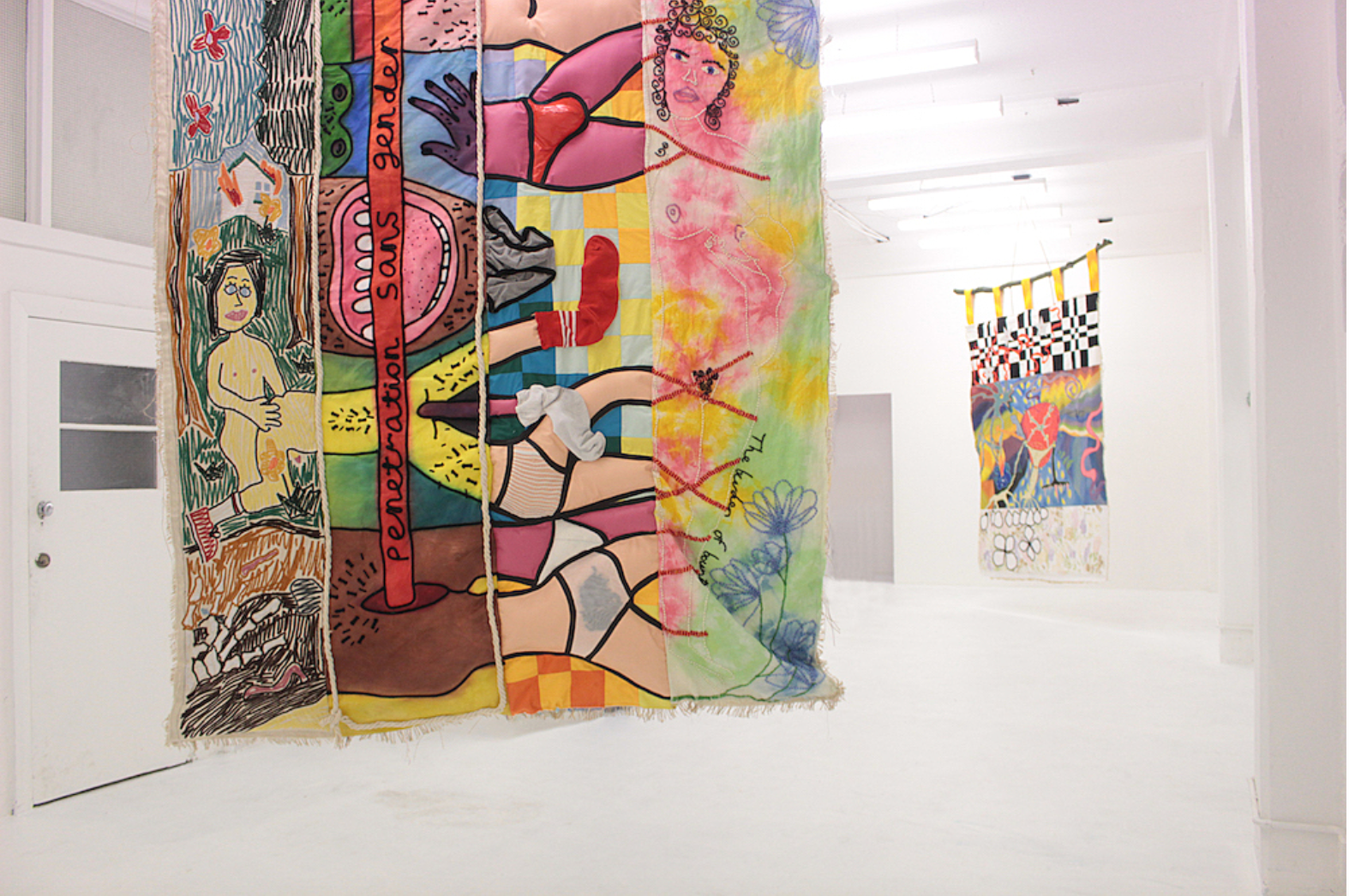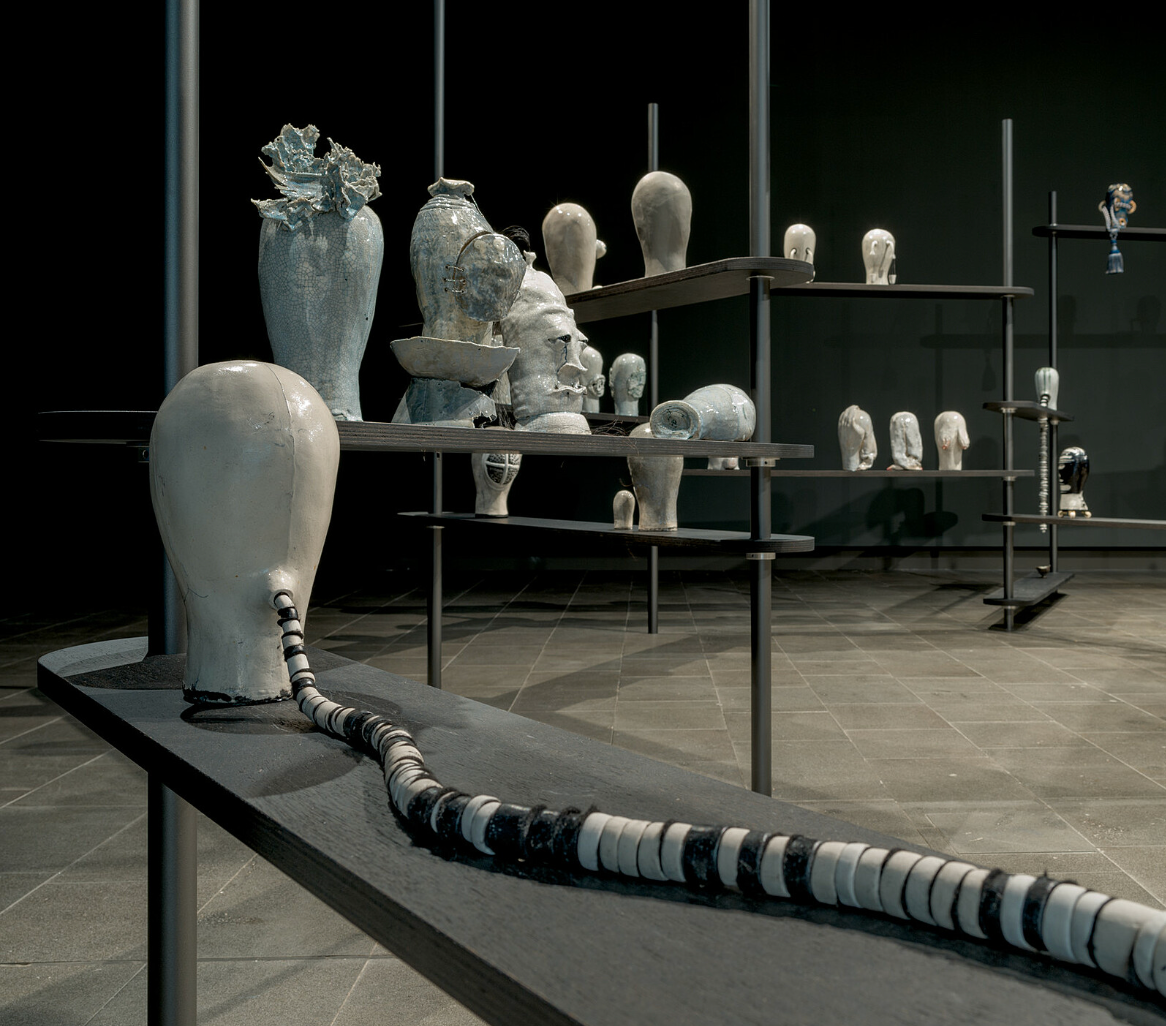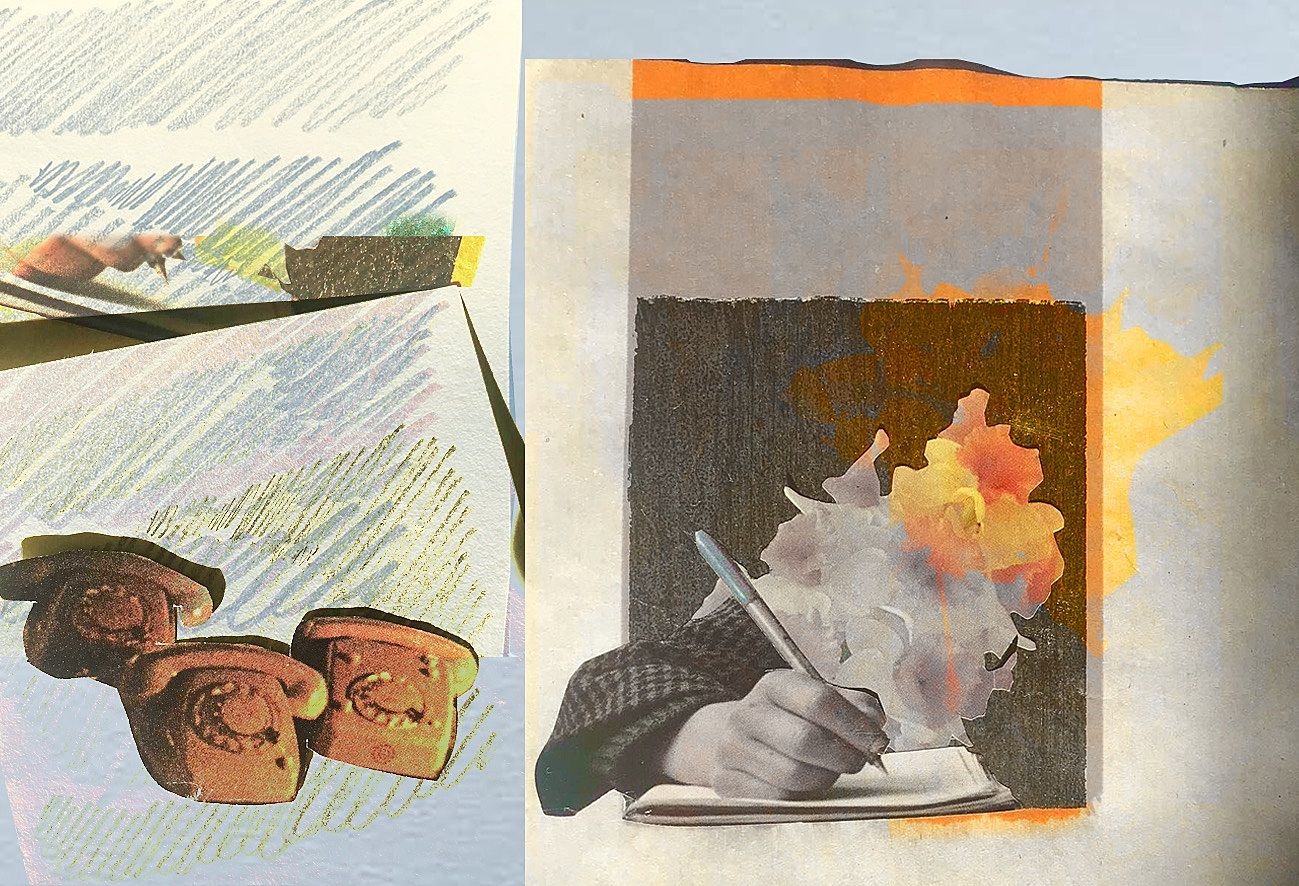Ten Moments in Aotearoa Visual Art 2019
Memorable art exhibitions, works and events from the year of visual arts in Aotearoa New Zealand.
Our team of art critics – Lucinda Bennett, Lana Lopesi and Francis McWhannell – look back on the year and its stand-out works, shows, events and one sad farewell.
Edith Amituanai
What a year it’s been for Edith Amituanai! I have to admit I’m biased, as she is a friend and one trusting enough to work with me twice in one year at that. That aside, my first major art moment for 2019 was travelling to Pōneke for Amituanai’s survey exhibition Edith Amituanai: Double Take curated by Ane Tonga for the Adam Art Gallery Te Pātaka Toi. The multilevel gallery takeover offered a powerful collection of photography, presenting the unseen moments and places of her Pacific communities. Supported with extensive public programmes by Herbert Bartley, remnants of the show can still be found in the lush monograph published by the gallery. – LL
The New Photography
We had a pretty healthy dousing of new art books this year, most of which focus on the mid-century painters and their major exhibitions across our country’s galleries. However, outside of that sweet spot came The New Photography, edited by Athol McCredie and published by Te Papa Press. The book covers New Zealand’s photographer pioneers of the 1960s and 1970s and, while I know nothing about photography, unlike most of the art books published over 2019, which tell of art histories, this one pieces together art theories. – LL
Mother-and-daughter work He Tangi Aroha – Mama Don’t Cry
One artwork from this year that is etched in my mind is He Tangi Aroha – Mama Don’t Cry (2019), by artist Kahurangiariki Smith and her mum, scholar Aroha Yates-Smith. Exhibited in Te Tuhi’s Moana Don’t Cry (which I reviewed here), the moving-image work brought together karaoke aesthetics, mātauranga Māori, and the bond between a mother and daughter to tell of Parawhenuamea, the Māori deity of alluvial waters and silt. A beautiful, refined work. I’m excited for the art Kahurangiariki Smith will make for us art audiences in the near future. – LL
Captivating sculpture by Sorawit Songsataya
I am of the opinion that the sculpture terrace at Toi o Tāmaki has finally realised its potential with Pōneke-based multi-media artist Sorawit Songsataya’s new commission, The Interior (2019). When I visited, two little girls were gently stroking the elegant blue neck of the fallen fibreglass moa while another child gazed intently at a whio, trying to figure out whether it was real (it isn’t; it is carved from ghostly Oamaru stone). Precipitated by the recent discovery of moa footprints in the Maniototo and informed by Trevor Lloyd’s 1907 painting Te Tangi o Te Moa from the collection, Songsataya’s installation “seeks to invert our relationship with non-human species”, as the gallery website tells me. Remembering this scene of children comforting the ‘last moa’, I can’t help but think Songsataya has achieved what he sought to. – LB
Significant survey shows
Toi o Tāmaki also excelled with two long-awaited exhibitions covering major figures from our art history: Frances Hodgkins and Colin McCahon. While the latter is hardly in need of greater recognition, A Place to Paint is transcendental, a crystalline reminder of why McCahon is held in such high esteem. However, it was Frances Hodgkins: European Journeys that truly stole my heart. Room after room of muddy browns and sunset pinks (those shades peculiar to Hodgkins), baskets of eggs and arrangements of urns stark against thick striped skies. The show also included previously unseen works from foreign institutions, as well as watercolours and smaller works from our own national collections that are normally passed over in favour of more recognisable oil paintings, and wall texts loaded with quotes from Hodgkins’ prolific correspondences. A special mention also to Jacqueline Fahey’s Surburbanites at the New Zealand Portrait Gallery Te Pūkenga Whakaata (now on display at the Pah Homestead in Tāmaki). A much smaller display than the grand retrospective staged by Christchurch Art Gallery Te Puna o Waiwhetū in late 2017, yet still brimming with gems, including Fahey’s regrettably prescient Emily Watching Protesters (2016), which takes on new meaning in the wake of the Christchurch terror attacks. – LB
Solo shows that made the heart swell
Let it be said that while I believe there is powerful, imperative art being made in Aotearoa right now, 2019 has been a dry year for contemporary exhibitions in Tāmaki and, indeed, across the country. For me, many of the oases in this desert have been solo exhibitions from female painters. Christina Pataialii’s provocative, idiosyncratic figuring of this place and time (which I have written on extensively here); Anoushka Akel’s aching bodily surfaces; Tira Walsh’s fast, intuitive behemoth debut at Two Rooms; Emma McIntyre’s filmy lavender swansong at the Shaddock Street Studio. These were the shows that made my heart swell in 2019, and my hope is that 2020 will gift us more solo shows from younger artists, and not just within the dealer circuit. Artists need solo exhibitions to progress their practices; to have the experience of making not just a body of work but a show; and to have their work seen on its own merits rather than folded into the grand narrative of a thematic exhibition. The current curatorial predilection for the biennial-style group show has seen a hollowing out of this crucial part of the art ecosystem, and the fact that every single standout exhibition for me this year was a solo venture seems to confirm the weight these shows carry. – LB
Collabs and collectives
This year, the United Kingdom’s most prestigious contemporary art award, the Turner Prize, made headlines when the four finalists successfully petitioned to share the honour, rather than see a single artist named winner. In the Aotearoa art world, too, there have been countless instances of the group being emphasised over the individual. Mata Aho Collective has shown monumental works here and abroad – for instance, as part of the current Adam Art Gallery Te Pātaka Toi at Twenty exhibition in Te Whanganui-a-Tara, and in Abadakone at the National Gallery of Canada. One of my favourite shows of 2019, SISSYMANCY! by Owen Connors at play_station, centred on a series of vibrant and mobile fabric works. These made reference to collaborative AIDS memorial quilts, and were based on ‘exquisite corpse’ drawings produced by queer artists from around the country. In a world variously threatened, togetherness offers a salve and perhaps also a solution. – FM
The personal and beyond: Areez Katki and Fiona Clark
Two artists have especially impressed me this year: Areez Katki and Fiona Clark. Katki’s Some Retained Delights was my favourite exhibition in Tāmaki Makaurau. The show included writings by the artist as well as a series of embroideries on found handkerchiefs created during a residency in Athens and a return to the artist’s hometown, Mumbai. The works were suspended about artist-run space RM, as if uplifted by a breeze and somehow frozen in the air. Clark has produced two consummate presentations this year: one as part of the abovementioned show at the Adam Art Gallery, and one titled Raw Material at the Govett-Brewster Art Gallery. Like Katki’s show and writings, Raw Material drew deeply on the artist’s personal life but also extended beyond it, gesturing towards the communities of blood and choice that bind us – that underpin our story-telling and art-making. – FM
Christchurch Art Gallery Te Puna o Waiwhetū
I’ve been hugely impressed by Christchurch Art Gallery Te Puna o Waiwhetū this year. Aotearoa is lucky enough to have a bunch of excellent smaller public galleries, from Te Tuhi in Tāmaki Makaurau to Blue Oyster in Ōtepoti, but Christchurch Art Gallery is a rare thing: a big institution that remains agile and adventurous. Among its remarkable offerings this year were Hidden Light, an intriguing show of historical photography, and Julia Morison’s beguiling Head[case] (now on show at Objectspace). With Auckland Art Gallery Toi o Tāmaki, Te Puna o Waiwhetū co-produced the retrospective Louise Henderson: From Life and an accompanying book, the first substantial monograph on the artist. Head curator Lara Strongman recently headed to the MCA in Sydney, but the gallery retains superb exhibition-makers, including Ken Hall, Felicity Milburn, and Nathan Pohio. The last has seen to it that taonga tūturu are included the gallery’s ‘canon hang’ – a still-too-rare situation in a country that is Māori at its core. – FM
Gone but not forgotten: the Elam Fine Arts Library
Last month saw the closure of the University of Auckland’s Fine Arts Library. Widely and passionately opposed by students current and former, the loss of this decades-old specialist facility is cause for great sadness, and cannot help but feel like an expression of a wider tendency towards devaluing the arts. At the same time, the closure stimulated heartfelt and powerful responses: in words (see, for example, Salene Schloffel-Armstrong’s ‘Imagine a Library Like This’), pictures (Samuel Hartnett’s Ex Libris, commissioned by Objectspace), protest actions, and the ongoing success story that is the independent Sāmoa House Library. As three writers about and lovers of art, we wish to whakamihi and pay special tribute to the dedicated librarians who have served at the Fine Arts Library over its long and proud life. The arts ecology of Tāmaki Makaurau and Aotearoa more broadly have been immeasurably enriched by their contributions, which will continue to ripple out into the future despite the short-sighted decisions of feckless ‘leaders’. – FM, LB, LL
Feature image: Mata Aho Collective, Aka (installation view), National Gallery of Canada, 2019.











